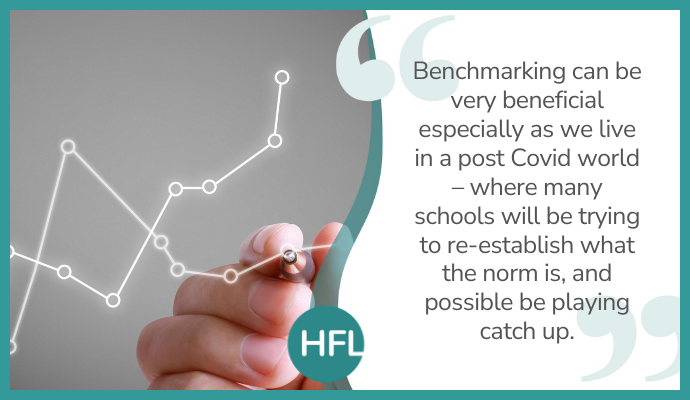
Benchmarking is a one of many tools available for Trustees and Senior Leaders to understand the financial performance of their academy trusts and individual schools compared to statistical neighbours.
It can be used to:
- establish a system of measures for school leaders, which can be used to identify best practice
- support decision making
- provide comparative information to help in future planning
- share knowledge and best practices in a confidential environment
Benchmarking may not always have the answers, but it will provide a useful insight into how the trusts and its schools compare to statistical neighbours, helping trusts to identify areas that may be of a higher than average spend.
It is important to remember that many benchmarking tools use historic data, and may not always represent the current situation. Nevertheless it is an important exercise for trusts to undertake.
Useful tools
VFMI
There are a number of tools available to support academy trusts with benchmarking. One of the latest tools available is the VFMI tool. This tool will help schools view their performance against 30 of the most statistically similar schools and will indicate areas where spend in higher than neighbours, where there may be opportunities for savings and efficiencies. It provides users with an automated assessment of their data compared with similar schools. It will identify areas with the biggest variance compared to other schools and hence will give a starting point of areas to investigate – which might lead to improved resource management – leading to better results for their pupils.
VMFI is very flexible as it will compare your school to 30 other most similar schools – but if you want to for example compare your school to other local schools you can edit the data locally to model different scenarios. This will be hugely beneficial for future financial planning for a 3-to-5-year budget plan.
SRMSAT
Trusts will shortly be completing and submitting their school resource management self-assessment tools. This includes a financial self-assessment, comparing the trust to statistical neighbours using the schools financial benchmarking service. This dashboard provides RAG ratings against the school’s spending and indicates hot this compares with similar schools and nationally recognised bandings.
Internal benchmarking
Many academy trusts are starting to benchmark internally, comparing real-time information in schools across the trust. This is particularly helpful where schools have local budgets and local decisions on use of suppliers etc. This can provide good examples of best practice across trusts, and enable sharing of resources and strong policy across an academy trust.
The role of benchmarking in budget setting
As trusts start to think more about budget setting, benchmarking can be a really helpful tool.
- using benchmarking you can compare staff costs and structure to other comparable schools – allowing school leaders to manage resources to support high quality teaching to get the best education for pupils.
- connecting with other schools to learn from their successes or even their challenges will be beneficial.
- comparing premises costs to other similar schools – and maybe pooling resources.
- comparing occupancy costs such as energy and water. Again – connecting with other schools could help in this area.
- comparing supplies and services with other schools.
Benchmarking – wider contexts
It is important to remember that there is not always a right or wrong way for trusts and schools to be spending money, as schools will all have different priorities. It is however a useful exercise to understand how the school compares to statistical neighbours, and whether areas of larger spend are understood within both the school’s content and the wider financial climate.
Blog authored by Fiona Clain and Louise Shaw.





